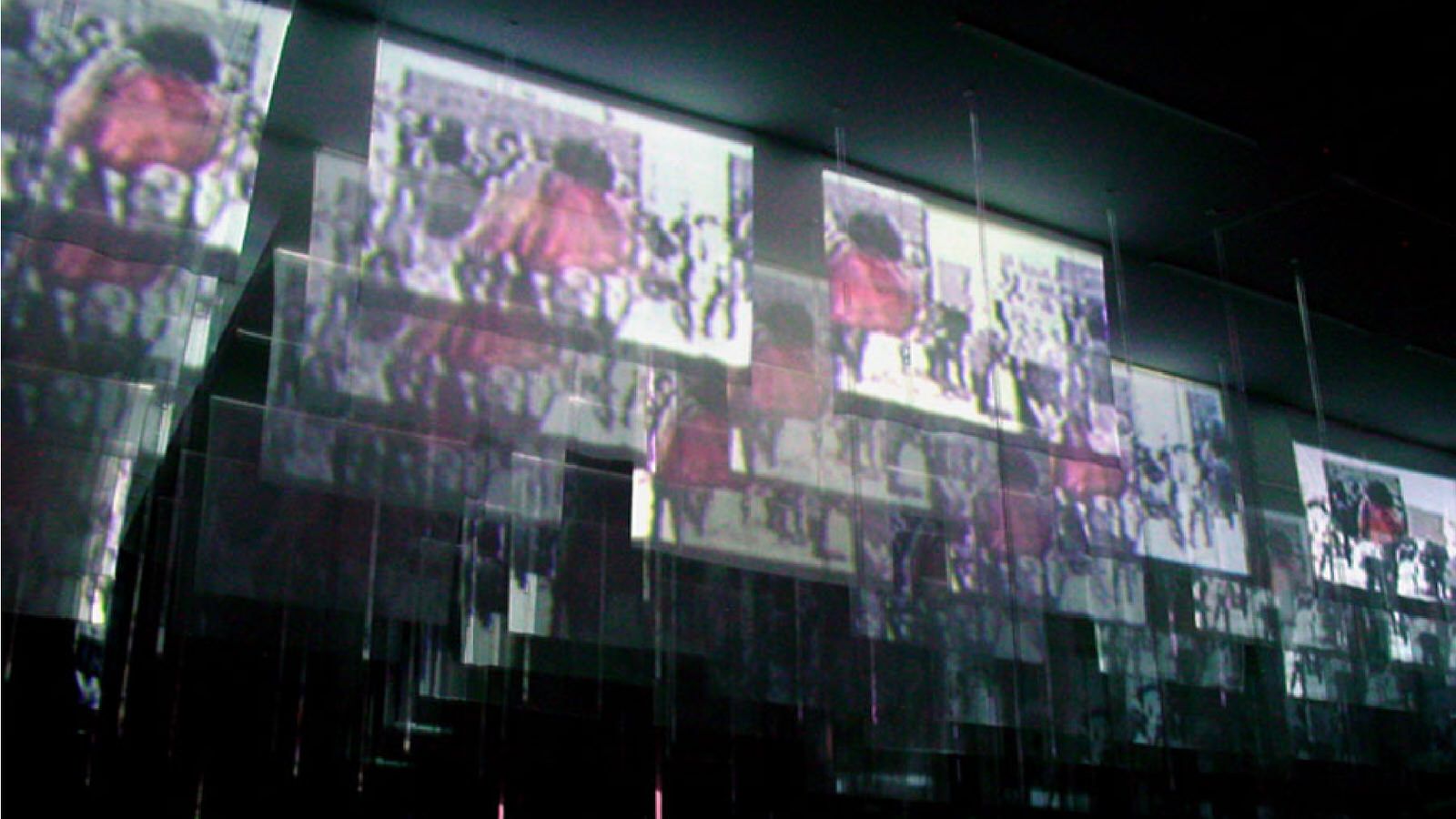Sub_terra
SUB_TERRA (2017)
Like the earth that in it shatters to the vortex of the absurd and its anguished terror, Sub_terra is a work that does not allow itself to be completely stabilized by thought, that resists the fixation of a “geography” -literal and symbolic- of meaning, that swallows ideas by making them explode from within by the affections it arouses. Perhaps what beats under the earth, under the skin of the earth, in that sub-cutaneous and sub-earthly region that emerges in the fractures that the work reveals, is the movement, the spasm or the symptom, so to speak, of a “telluric pain”, of affections inscribed in the body of the landscape that speak to us of the violence of which the landscape itself is a mute witness in its radical precariousness. From a bird’s eye view (like the shot with which the video installation begins, which gradually dilates in the images that from afar are lost, hidden, escaping…), the fragile brutality of the landscape is a silent witness in its radical precariousness. ), the fragile brutality of Sub_terra lies precisely in this resistance to think of the landscape as the passive stage or the backdrop of the violent dynamics that intertwine, but at the same time exceed, the category of “conflict” (a category, by the way, that will have to be reformulated to account for these excesses in their mutation or their survival in the “post-conflict”). As already announced in the bloodshed of the Marmato mountains recorded in Sin cielo, the apparent passivity of the landscape is not opposed in the work to the activity of the human actors usually associated with the hegemonic discourses on violence in Colombia. Rather, its precarious materiality is foregrounded as a space of inscription, but also of enunciation, of human and non-human wounds in which social violence becomes environmental violence and vice versa.
The land exploited as cheap raw material, the land that has been violently disputed ever since Colombia has existed (I am thinking of colonial and post-colonial extractivism, of nineteenth-century latifundism, of the agrarian origin of the conflict and, of course, of the more or less invisible wars of mining today), that land is the one that speaks its deafening language of silence in Sub_terra. The earth speaks, responds: in these peeling images its mute voice reveals how the traces of the most structural violence in our society – inequality, extreme poverty, misery, classism and racism – leave in their wake other, perhaps more structural and more irreparable, violence in the ground on which we stand, on which our history seeks to build itself. The use of archival material here does not make the earth a space for its calm, comfortable or self-complacent fixation in a human memory; the earth, in other words, is not the “tabula rasa” on which history can always continue to be rewritten as if it were an infinite, infinitely available, infinitely fertile and infinitely passive resource.
Quite the contrary: under the cracked body of the earth that cries out in Sub_terra there is no longer any certainty of foundation, only the infinite vertigo of that other history, that other time and, with it, that other memory that moves like a latent avalanche, an inaudible tremor, the node of an earthquake in the making. From that depth that is projected to the surface of the screen and that swallows it in the end in its chaos, the tired earth claims the repair of its violences, which are also ours, which also vibrate in each of our steps: the repair, as paradoxical as necessary, of what is increasingly presented as an irreparable rubble. Since Nóctulo, there is a turn in Echeverri’s work, or in one of its aspects, towards this exploration of nature as a space of reverberation of a traumatic or, better, affective memory that goes beyond -or beyond- the exclusively subjective register of violence in the history of the country. This look is more than urgent to think about the becoming of the human and the non-human in their mutual violent imbrication, since the precariousness of the bodies and the land has an increasingly pressing and painful limit. The call of this screen made skin made landscape is imperative for its undeniable character: there is no organic, inorganic or virtual skin that can withstand everything.
By: Juan Diego Pérez, Philosopher.
TECHNICAL DATA
Video: 1 screen. Full HD
- ARTBO, OMA Award, 2017
- Duration: 6 minutes. Loop
CREDITS
Location: Municipality of Marmato, Caldas. Gold mining.
Director: Clemencia Echeverri
Director of photography: Camilo Echeverri
Editing: Victor Garcés and Clemencia Echeverri



